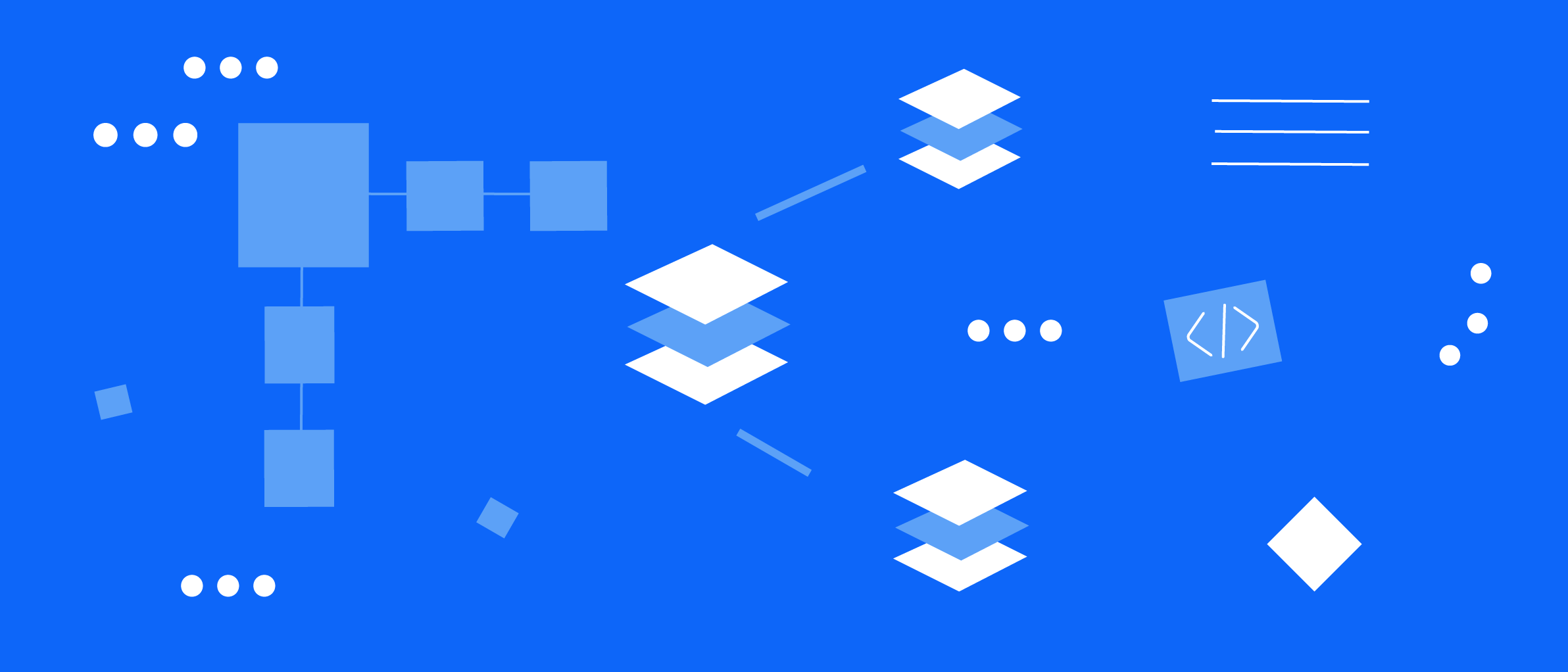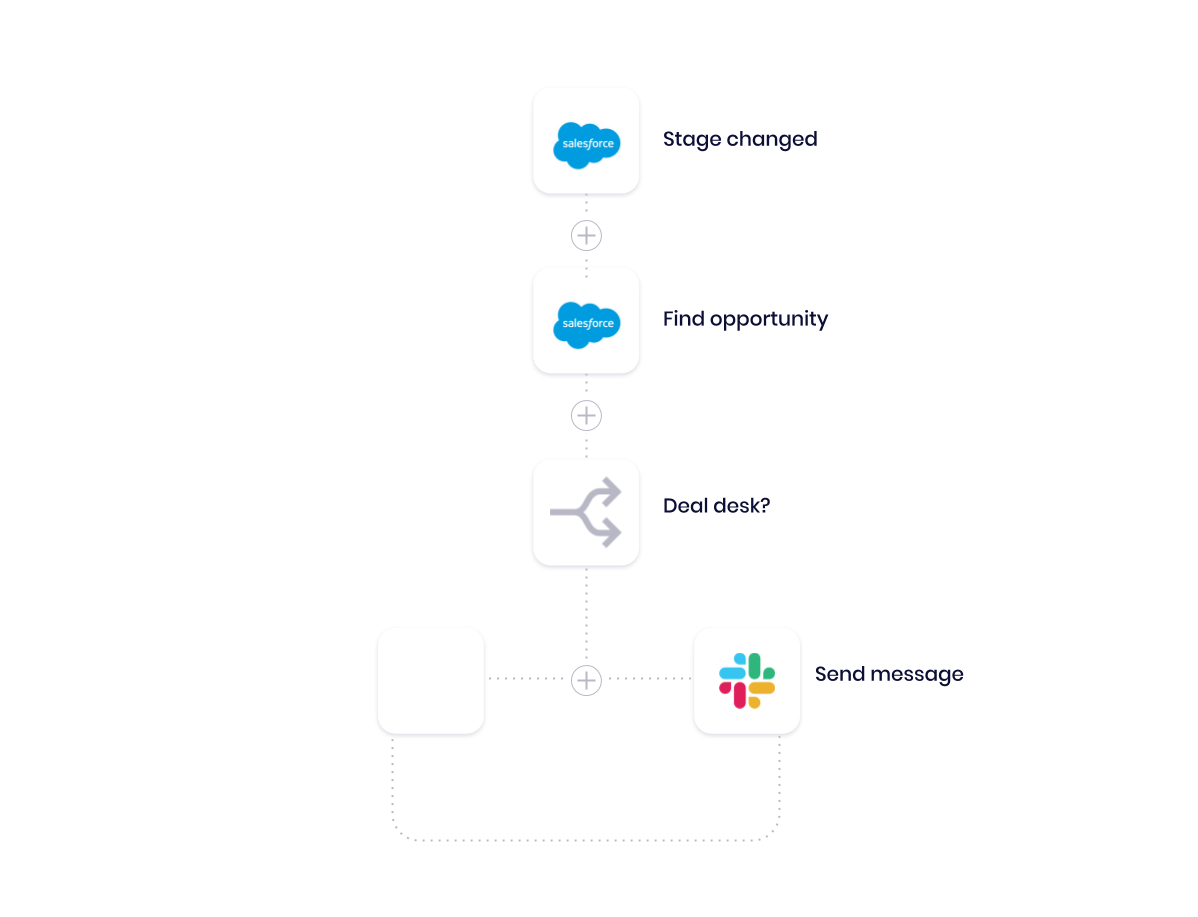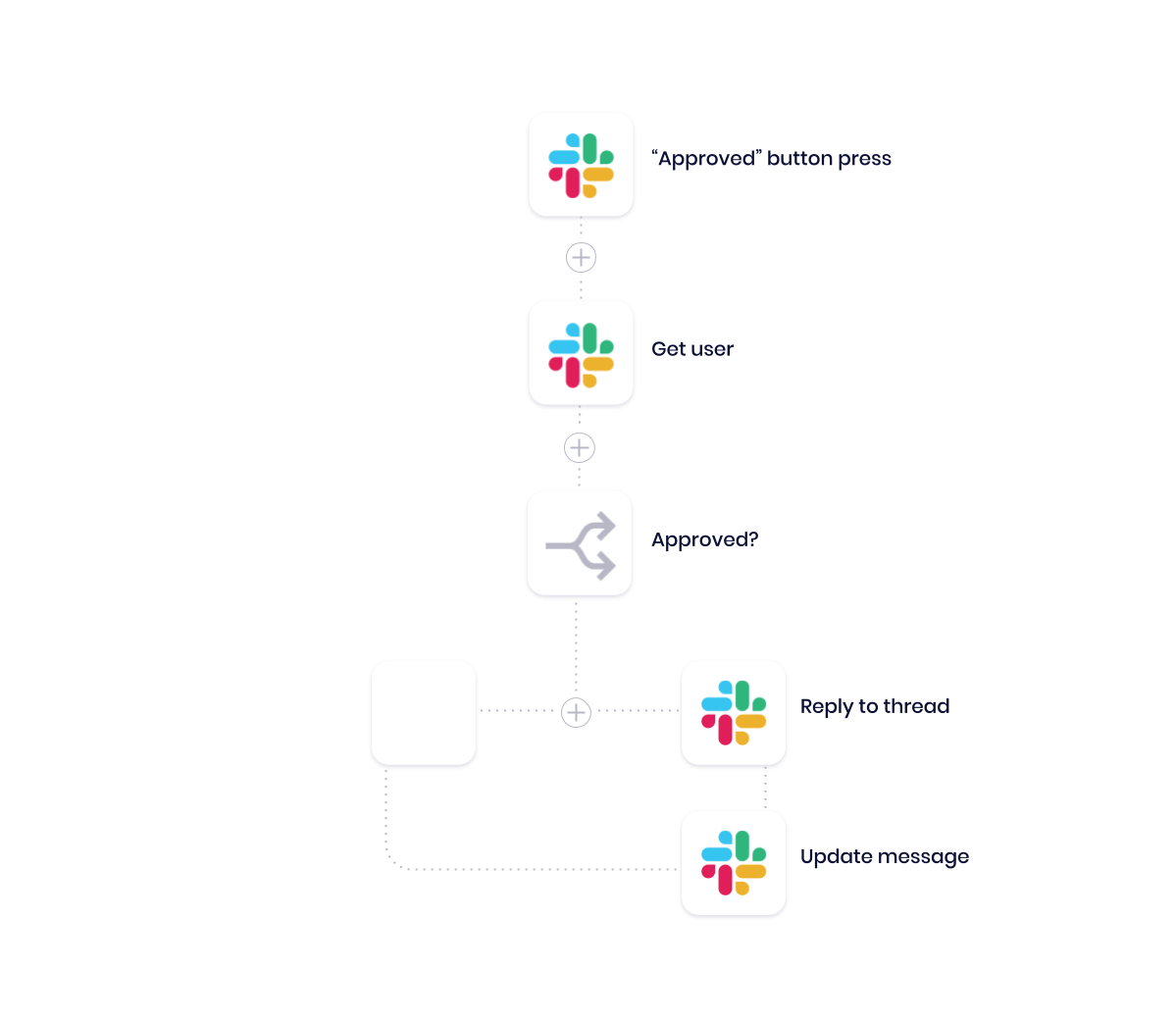Streamline strategic sales with an automated deal desk

Despite being relatively unknown a few years ago, deal desks have become standard in 70% of modern sales organizations to align high-level sales strategy with real-time deal negotiation and approvals. This process ensures all stakeholders are in alignment for non-standard deals and can reduce support costs, drive down customer churn, and help sales teams imagine creative solutions for their customers. This post discusses a new strategy to help sales operations professionals reap all the benefits of a deal desk while using automation to streamline the process.
Sometimes, in-depth deal conversations can come at a cost. A deal desk can quickly expand into a bureaucratic, time-intensive endeavor that slows the sales cycle to a halt while sales reps scurry to track down the participating executives. Some businesses have an entire team devoted to deal desks.
Here’s where automation can help. General Automation Platforms (GAP) can integrate communication tools with your CRM to seamlessly provide your deal desk with context directly via internal messaging tools:

Automation lets you distill your deal desk process to a single Slack alert.
Automating your deal desk lets the key leaders in your organization quickly evaluate and approve pending deals. In turn, you’ll speed up your sales cycle while encouraging strategic deal-making in your sales organization.
To start us off, here’s a quick refresher on the importance of deal desks and the kind of information we’ll need to provide context to these discussions.
Article
Win more deals by automating win/loss analysis
Article
Drive sales-marketing alignment by sharing sales wins
What is a deal desk?
A deal desk is an approvals process in the sales cycle that ensures new deals, particularly non-standard ones, align with sales and product strategy. The typical deal desk includes leaders in sales, product, finance, and customer success who meet to review information about the deal in consideration.
The deal desk committee considers factors such as customer-product fit, profitability, and support burden. Effective deal desks add value by ensuring non-standard deals fit your company’s products and services in the long term. They also consider whether the size of the contract justifies the potential costs of additional support.
As a result, deal desks can be the first line of defense in reducing future churn from customers that may not be a good fit for their current contract. The decisions of an effective deal desk act as a reality check that conserves customer support resources.
To inform these discussions, we’ll want to include some of the following details in our deal desk alert:
Company background: This includes details like company name, size, the product they’re hoping to purchase, and how they’ll use it.
Contract information: This includes details like contract terms, price, and length.
Support information: This includes details on the level of support this customer will need to set up and maintain your product.
Keep in mind, the importance of these details varies depending on your line of business and sales strategy. You’ll want to leverage the flexibility of a GAP to craft a custom deal desk alert that includes data from your favorite tools.
See how to automate your deal desk in this on-demand weekly demo.
Walkthrough: Automate your deal desk in 3 stages
For this automated workflow, we’ll be connecting a CRM (in this case, Salesforce) with an internal messaging tool (such as Slack). We’ve split up our workflow into three stages:
Tracking changes in opportunity stage - We’ll start our workflow with routing logic that triggers whenever an opportunity stage updates in Salesforce. Then, we’ll determine if the updated opportunity is ready for deal desk approval.
Marking deal as “Approved” - Once initiated, our workflow sends a confirmation message in Slack and updates the existing approvals message.
Updating the existing record in your CRM - Finally, our workflow pulls the opportunity ID and uses it to update the record in Salesforce.
Stage 1: Tracking changes in opportunity stage

Using a GAP, we can automatically track stage changes and trigger message creation.
Opportunity stage change/ Find opportunity - Before we initiate our deal desk approvals process, we first need a way to identify when a deal is ready to be reviewed. To do this, we’ve created a trigger that listens for opportunity stage changes in Salesforce.
Deal desk? Boolean - Once our trigger is called on, our workflow uses a series of Boolean operators (if/then statements) to route opportunities to the correct action. Our Booleans are helpful for sales cycles with multiple review stages, as you can route updated opportunities to different channels and approvers, depending upon their stage.
Send message - Once our workflow confirms that the opportunity stage has updated to “5a - Deal Desk”, it sends a Slack message to our “deals-desk” channel for review, discussion, and approval.
Still, compiling this information is only half the battle. The next stage covers how we’ll take approvals from our deal desk and update our existing records.
Stage 2: Marking deal as “Approved”

Once the deal desk team approves an opportunity in Slack, our workflow automatically messages the update to the appropriate channel and thread.
“Approved” button press - The second stage of our workflow begins when a member of the deal desk team approves a deal by pressing the button attached to our Slack message.
Get user - Once we call this workflow, we pull information on the user who approved the deal, which we use to customize a confirmation message.
Approved? Boolean - Next, we initiate one more Boolean statement to confirm that our deal was approved, and we reply to the existing message thread to send a confirmation.
Reply to thread/ Update message - Then, we update our existing Slack message, removing the “Approve” button to prevent duplicate submissions and provide our deal desk with a real-time record of approved deals.
Stage 3: Updating the existing record in your CRM

Pictured: Updating the record in your CRM
List helper - Lastly, our workflow concludes by updating our record in Salesforce. Before that happens, we use a list helper to help us find the Salesforce opportunity ID in the original Slack message.
Approve in Salesforce - Once we’ve successfully identified this ID, our Salesforce connector adds a new field “Deal Desk Approval” to our record, and populates it with the name of the approver. Finally, our workflow updates the stage to “5 - Negotiation” to close out our workflow.
This stage plays an essential role in sales data hygiene. In fact, an average of 25% of any given B2B database is unreliable. Updating your CRM automatically prevents human error and ensures you have a comprehensive record of the current status of a deal.
Automation streamlines sales productivity
With this workflow, your sales team can spend less time waiting around for approvals, and more time chasing the right deals. Deal desk automation combines the best of both worlds, speed and strategy, to grow your business in the right direction.
Interested in seeing how automation can streamline your revenue operations? Join one of our weekly group demos.
